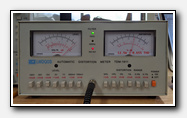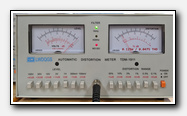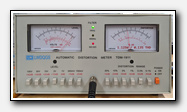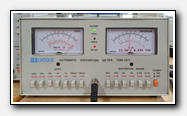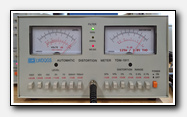lab on the cheap
... the only difference between men and boys
is the price of their toys ...
back in the day
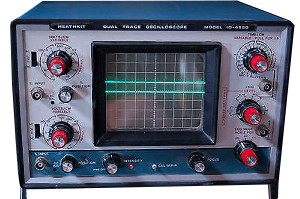
Our first piece of test gear was a moving coil VOM acquired about age 12. Next a digital hand held VOM. Sometime in the 70's a Heath 4550 10MHz Dual Channel Oscilloscope was built. Over time, the collection kept growing with meters, signal generators, LCR meters, etc. Techcron IMD Analyzer, Leader portable scope, HP 330x Analog Test Sets, Philips DSO @ ≈$20,000, Audio Precision Portable One...
Upon retirement, we gave away what remainded. We were DONE!
if only Mum had intervened when I rebuilt the telephone... at age 7!
Upon retirement, we gave away what remainded. We were DONE!
if only Mum had intervened when I rebuilt the telephone... at age 7!
new tinker toys
To overcome the M-125 flaws as detailed in teaching the Tubes4HiFi / VTA M-125 to sing, we needed some test gear! The digital revolution has given us incredible power for pocket change. One can purchase a DSO for under $100 that does almost everything as well and in some cases better than a $20,000 product of 30 years ago. It fits in a pocket and doesn't require two small men and a boy to shift.

LOTO Instruments makes a nice range of PC based DSO. The OSC802, complete with probes, is around $100. It includes FFT, Trace Math, Recorder, etc. Software is continually improved with new features, bugs are fixed timely and the company is responsive to suggestions and comments. Well recommended.
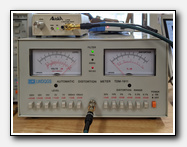
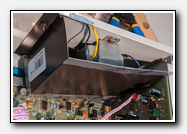
Casting about for a distortion set, the LongWei TDM-1911 seemed to have possibilities. It's a Chinese rip of a Leader and under $200. Like a lot of Chinese product, it's sow's ear in a silk purse. As can be seen in the first image, it capable of impressive performance, accurately measuring the 0.002% distortion of the superb AkitikA 2PPM Sine Generator.
The gotcha is it is only capable after modification to remove 120V noise. This involves rotating the power transformer, removing the untwisted 120VAC power switch wiring which runs full length along the distortion board and adding a transformer shield. This unit also had a bad power input connection that opened when the transformer was rotated.
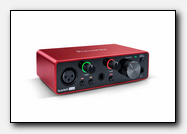
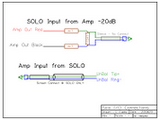
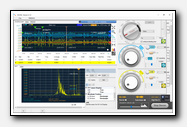
Impressive specs. So-So performance. Founded in 1985 by Rupert Neve, Focusrite was a sine qua non for top quality recording. Dead quiet, fabulous sonics, meticulous design and construction that fairly oozed quality. An absolute pleasure to use. Sadly, the Scarlett line trades on the reputation. The specs are post an A-weighting filter. Usable. Just. Tolerable for the tariff.
The SOLO Maximum input is +22dBu or ≈9.5V. With a 20dB pad, safe input levels are about 60W. Over that and the smoke may escape.
The SOLO Maximum input is +22dBu or ≈9.5V. With a 20dB pad, safe input levels are about 60W. Over that and the smoke may escape.
the Pudding
My dear old Nan was oft heard to say “The Proof of the Pudding is in the Eating.” So, how do our Tinker Toys hold up in real world testing? Pre images are prior to Big C, input LP filter and 8Ω feedback. Input tubes 2x 5963. Later update to v6/6829 and v7/12au7 reduced distortion further still.
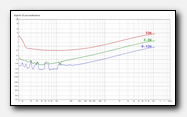
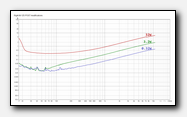
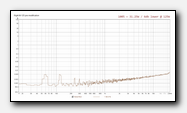
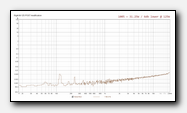
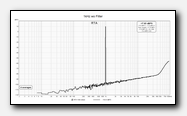
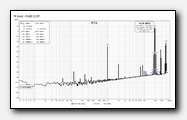
The Solo, at left, has steadily increasing noise that peaks around 100kHz. Good Enough for the task at hand.
Modified amplifier has slightly lower THD and much less 60Hz in the noise floor. IMD is rather more than expected.
Modified amplifier has slightly lower THD and much less 60Hz in the noise floor. IMD is rather more than expected.
Test Load: 8Ω ‖ 16nH - ‖ - Amps drive Kimber Monocle XL 2.5m & LFT8b mid panel: 10.7Ω ‖ 37nH
Measurements above made with Room Eq Wizard aka REW. A truly excellent product no self-respecting audiophoole should be without. And for pity sake, if you use it, DONATE!
stock 16Ω feedback 1kHz THD
Neither before nor after modification do the amps come anywhere near close to claimed distortion specifications.
AkitikA source THD+N @ 1kHz: 0.002% @ 1V, 0.003% @ 100mV.
AkitikA source THD+N @ 1kHz: 0.002% @ 1V, 0.003% @ 100mV.
modified 8Ω feedback 1kHz THD
In all cases 8Ω distortion is lower with feedback taken from the 8Ω tap.
the Icing
The amount of time I've spent looking for proper and verified tube testers, I should have just designed and built one. So I did. Inspired by Grant Wills @ Valve Heaven and others.
Tests up to 440VDC @ ≈250mA.
Tests up to 440VDC @ ≈250mA.
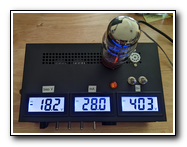
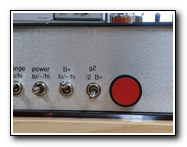
Schematic, Parts List, CAD chassis layout. Interior images
PCB available. Contact for more info.
The design can be modified to use any desired sockets or add a 'patch' bay for almost any tube socket...
...but that's a YoYo: You're on your own
PCB available. Contact for more info.
The design can be modified to use any desired sockets or add a 'patch' bay for almost any tube socket...
...but that's a YoYo: You're on your own


